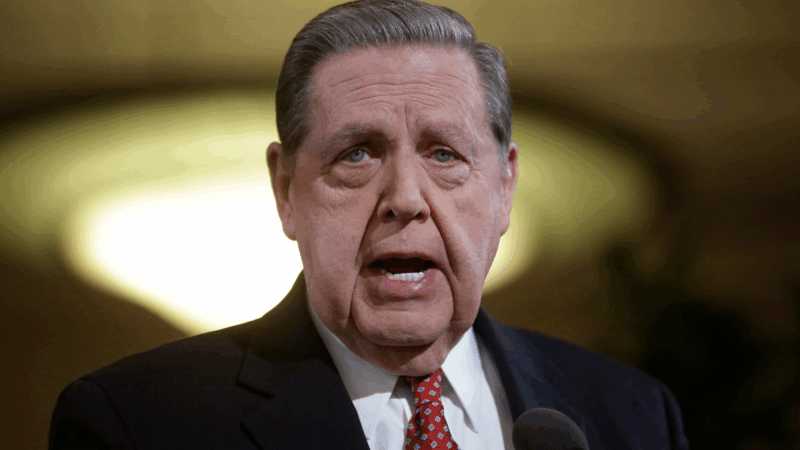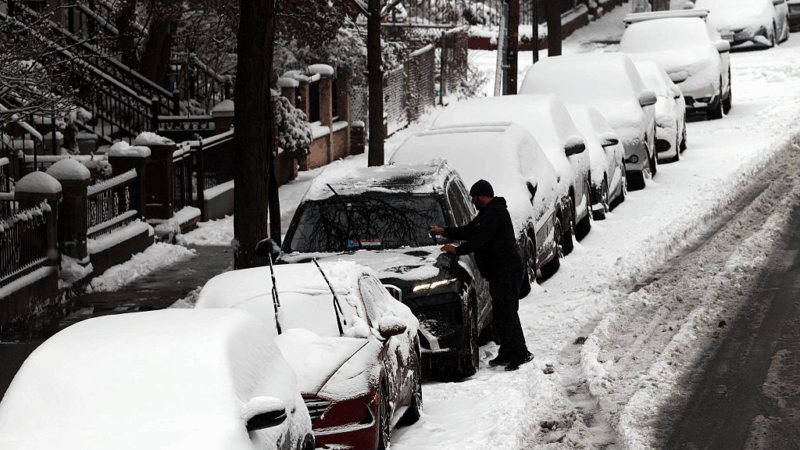Why beef prices are higher than ever (and shoppers are finally resisting)
NPR’s series Cost of Living: The Price We Pay is examining what’s driving price increases and how people are coping after years of stubborn inflation. How are higher prices changing the way you live? Fill out this form to share your story with NPR.
What’s the item?
Ground beef
How has the price changed since before the pandemic?
Up 51% since February 2020, according to the Bureau of Labor Statistics.
Why has the price gone up?
It’s the law of supply and demand. America’s beef cattle herd is the smallest in 75 years, in part because of drought. But Americans’ love of hamburgers and steaks has kept demand strong — until recently.
In July, the U.S. Department of Agriculture continued to record a shrinking number of U.S. cattle and calves, forecasting that beef production would decline 4% over this year and another 2% in 2026.
Meanwhile, foreign imports are also down. Brazilian beef faces a 76% tariff. Fears about the screwworm parasite have led the USDA to block livestock from crossing from Mexico to the U.S. to safeguard the nation’s food supply.
Ranching in America can be a topsy-turvy, break-even or money-losing business, but not right now.
“We’ve kind of hit this perfect storm,” says Brady Blackett, a third-generation Angus cattle producer in Utah. “There’s healthy competition for the cattle, and there’s not enough of them to fulfill the demand. And so it has driven prices to historic highs.”
Loading…

It’s a sharp turnaround. Blackett remembers a tough drought a few years ago, caused in part by climate change, sweeping through many cattle states. He had to buy pricey feed when his own alfalfa fields couldn’t get enough irrigation. He had to pay for someone to haul water for his cattle to drink when springs ran dry in the grazing pastures.
As it got harder to feed and otherwise maintain their herds, producers in the summer of 2022 slaughtered more beef cows than ever in the USDA recordkeeping. They were already reeling from losses during the pandemic, which disrupted meatpacking plants, plus rising inflation and interest rates. Beef prices tumbling from too much available meat further discouraged ranchers from replenishing their herds.
Repopulation is still going very slowly — for new reasons. Facing ever-higher operations costs, ranchers are leery of investing in an expansion. And the record values that cattle can fetch mean that it’s often more profitable to sell young females (called heifers) for meat than to keep them for breeding.
“There’s not a lot of incentive to rapidly rebuild the herd,” Blackett says. “Us, along with ranchers across the United States, are selling those heifers that might otherwise be retained into the herd.”
And given that it takes years to raise a new cow, beef may remain in short supply for a long while.
What are people doing about it?
Restaurants and stores are raising prices. And, new data suggests, consumers may be starting to think twice about their loyalty to beef.
At the Block 16 sandwich shop in Omaha, Neb., three-quarters of customers come by to bite into their take on the classic: a hamburger with a beef patty, lettuce, tomato, pickles. The burger cost $8.95 pre-pandemic and now $11.95, all because of costlier meat.
“Sometimes I look at our menu and I’m like, ‘Oh my God, we’re charging that much for a burger?’ But it’s what you’ve got to do to stay in business,” says co-owner Paul Urban. “And it’s affected us at home as well. I love a good steak, but I’m not paying $19 a pound for a ribeye.”
In fact, research firm Circana is tracking a notable shift at the grocery store. For the first time, spending on ground beef — historically one of the fastest-growing categories — has hit a plateau.
Loading…
“We’re seeing people opt away from beef,” says Circana’s Chris Dubois. “For years, all we saw were increasing prices and increasing demand. And this is the moment of change.”
Last year, grocery shoppers bought 4% more ground beef than a year prior, Circana found. But in recent weeks — between mid-July and mid-August — shoppers only bought 0.2% more ground beef than a year ago.
Skeeter Miller, who runs the barbecue restaurant chain County Line, says he’s paying nearly double the price for hamburger meat than he did a few months ago. He says higher prices have started to drive away some diners, with visits down about 5% across his six locations in Texas and New Mexico.
Brisket has jumped in cost, too, forcing him to consider the unfathomable, Miller says: “Am I just going to put a note on the menu that says, ‘Hey, brisket has gotten so expensive, I’m sorry, but I’m going to hold off on cooking brisket until the price comes back down’?”
Many of his rivals have simply shrunk their portions. But Miller says his goal is to feed people, not fool them — and his customers might understand, he adds, as they too are seeing record beef prices at the grocery store.
Jeffrey R. Holland, next in line to lead Church of Jesus Christ of Latter-day Saints, dies at 85
Jeffrey R. Holland led the Quorum of the Twelve Apostles, a key governing body. He was next in line to become the church's president.
Winter storm brings heavy snow and ice to busy holiday travel weekend
A powerful winter storm is impacting parts of the U.S. with major snowfall, ice, and below zero wind chills. The conditions are disrupting holiday travel and could last through next week.
Disability rights advocate Bob Kafka dead at 79
Bob Kafka was an organizer with ADAPT (American Disabled for Attendant Programs Today), a group which advocates for policy change to support people with disabilities.
‘It’s behind you!’ How Britain goes wild for pantomimes during the holidays
Pantomimes are plays based on a well-known story — often a fairy tale — which are given a bawdy twist. The audience is expected to join in throughout, shouting as loudly as they can.
Kennedy Center vows to sue musician who canceled performance over Trump name change
The Kennedy Center is planning legal action after jazz musician Chuck Redd canceled an annual holiday concert. Redd pulled out after President Trump's name appeared on the building.
Our top global photo stories from 2025: Fearless women, solo polar bear, healing soups
These stunning photos include a polar bear in a Chinese zoo, a teen in Zambia facing an uncertain future, Mongolian kids watching TV in a tent, a chef prepping a bowl of good-for-you soup.







